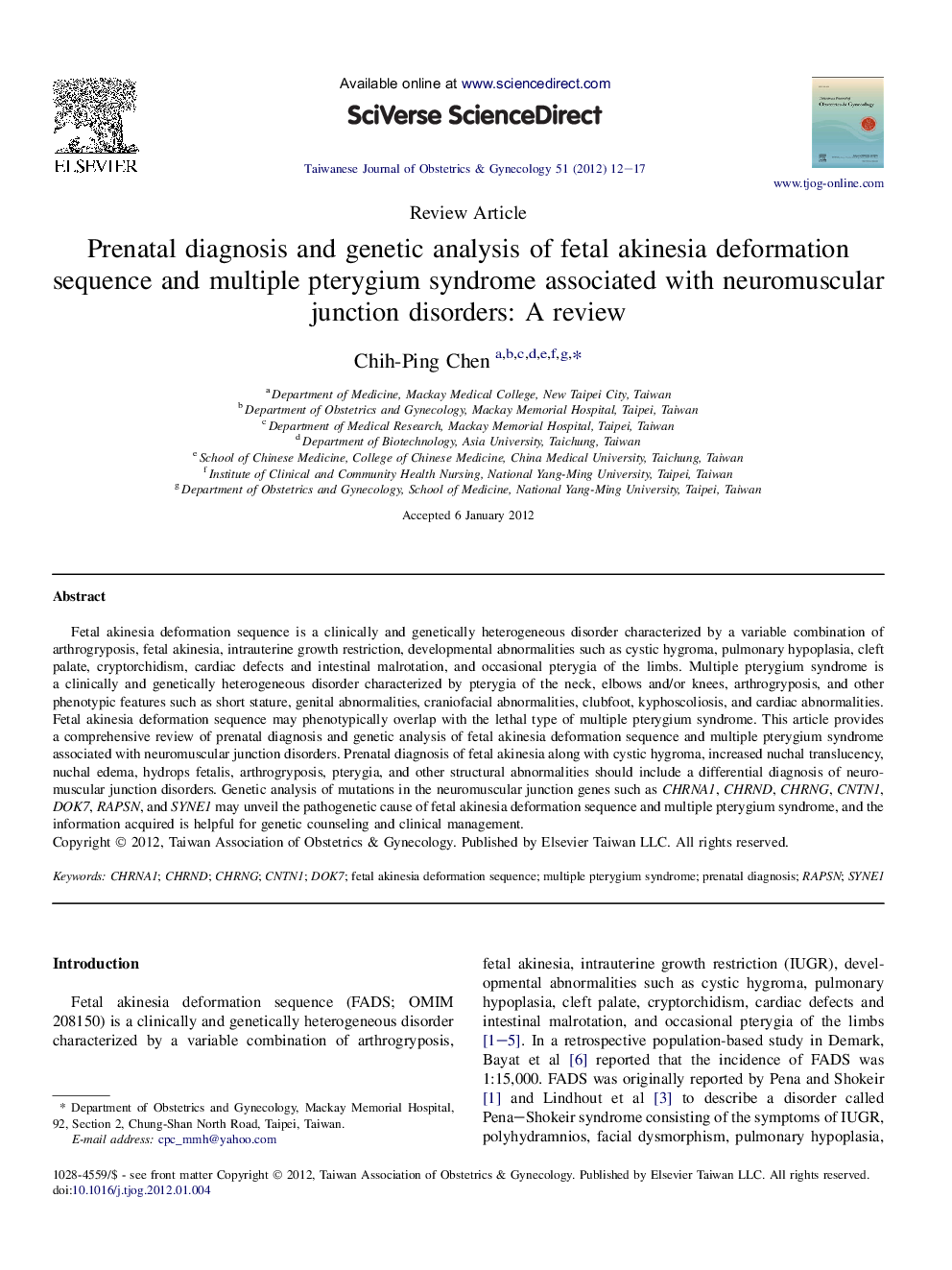| Article ID | Journal | Published Year | Pages | File Type |
|---|---|---|---|---|
| 3975313 | Taiwanese Journal of Obstetrics and Gynecology | 2012 | 6 Pages |
Fetal akinesia deformation sequence is a clinically and genetically heterogeneous disorder characterized by a variable combination of arthrogryposis, fetal akinesia, intrauterine growth restriction, developmental abnormalities such as cystic hygroma, pulmonary hypoplasia, cleft palate, cryptorchidism, cardiac defects and intestinal malrotation, and occasional pterygia of the limbs. Multiple pterygium syndrome is a clinically and genetically heterogeneous disorder characterized by pterygia of the neck, elbows and/or knees, arthrogryposis, and other phenotypic features such as short stature, genital abnormalities, craniofacial abnormalities, clubfoot, kyphoscoliosis, and cardiac abnormalities. Fetal akinesia deformation sequence may phenotypically overlap with the lethal type of multiple pterygium syndrome. This article provides a comprehensive review of prenatal diagnosis and genetic analysis of fetal akinesia deformation sequence and multiple pterygium syndrome associated with neuromuscular junction disorders. Prenatal diagnosis of fetal akinesia along with cystic hygroma, increased nuchal translucency, nuchal edema, hydrops fetalis, arthrogryposis, pterygia, and other structural abnormalities should include a differential diagnosis of neuromuscular junction disorders. Genetic analysis of mutations in the neuromuscular junction genes such as CHRNA1, CHRND, CHRNG, CNTN1, DOK7, RAPSN, and SYNE1 may unveil the pathogenetic cause of fetal akinesia deformation sequence and multiple pterygium syndrome, and the information acquired is helpful for genetic counseling and clinical management.
